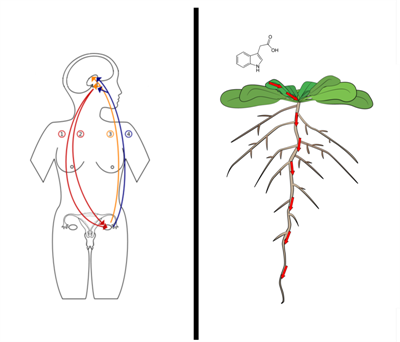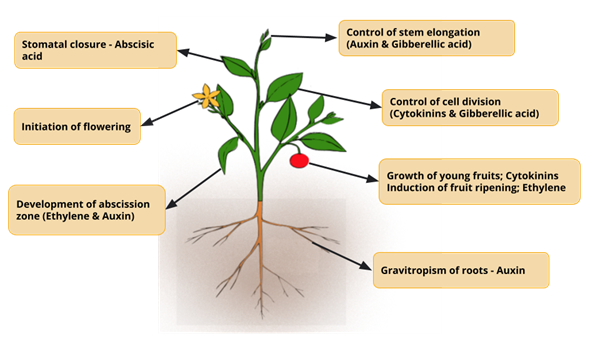
PUMPA - SMART LEARNING
எங்கள் ஆசிரியர்களுடன் 1-ஆன்-1 ஆலோசனை நேரத்தைப் பெறுங்கள். டாப்பர் ஆவதற்கு நாங்கள் பயிற்சி அளிப்போம்
Book Free DemoWhat are hormones?
Recall that you have learnt about plants. So far, from the lower grades, we learnt about plants. We know that just like animals, they too grow, react to stimulus, and perform various physiological functions.
But have you thought of it that how these processes occur with synchronization?
Unlike animals, plants lack a nervous system that helps control and coordinate these physiological processes. Then what factors control and blend them?
The control and coordination in plants are performed by chemical substances known as hormones. Let us study hormones, the various hormones secreted in plants, and their importance.
The word hormone is derived from the Greek word "hormone", meaning "to excite", "to stimulate", "impulse".

Hormones transported in plants and animals
Plant hormones:
The control and coordination in plants are carried out by these chemical substances in plants known as plant hormones.
These substances are also known as phytohormones and are transported to different parts of the plants to perform various physiological functions.
These substances are also known as phytohormones and are transported to different parts of the plants to perform various physiological functions.
These are organic molecules produced in low concentrations in plants, controlling various morphological, physiological, and biochemical responses.
Types of plant hormones:
Plant hormones can be classified as five major classes. They are as follows:
- Auxins
- Cytokinins
- Gibberellins
- Abscisic Acid (ABA)
- Ethylene
In accordance with growth auxins, cytokinins and gibberellins are the plant hormones that promote plant growth; abscisic acid and ethylene inhibit plant growth.

Hormonal interaction in plant growth and development
It stimulates the formation of an abscission zone in leaves, flowers, and fruits, leading to premature shedding.
Reference:
https://en.wikipedia.org/wiki/Hormone#/media/File:Hormone_Transport.png